<< Our Photo Pages >> Poulnabrone - Portal Tomb in Ireland (Republic of) in Co. Clare
Submitted by Anthony_Weir on Wednesday, 07 October 2020 Page Views: 25111
Neolithic and Bronze AgeSite Name: PoulnabroneCountry: Ireland (Republic of) County: Co. Clare Type: Portal Tomb
Nearest Town: Ennis Nearest Village: Poulnabrone
Map Ref: M2359500356
Discovery Map Number: D51
Latitude: 53.048697N Longitude: 9.14004W
Condition:
| 5 | Perfect |
| 4 | Almost Perfect |
| 3 | Reasonable but with some damage |
| 2 | Ruined but still recognisable as an ancient site |
| 1 | Pretty much destroyed, possibly visible as crop marks |
| 0 | No data. |
| -1 | Completely destroyed |
| 5 | Superb |
| 4 | Good |
| 3 | Ordinary |
| 2 | Not Good |
| 1 | Awful |
| 0 | No data. |
| 5 | Can be driven to, probably with disabled access |
| 4 | Short walk on a footpath |
| 3 | Requiring a bit more of a walk |
| 2 | A long walk |
| 1 | In the middle of nowhere, a nightmare to find |
| 0 | No data. |
| 5 | co-ordinates taken by GPS or official recorded co-ordinates |
| 4 | co-ordinates scaled from a detailed map |
| 3 | co-ordinates scaled from a bad map |
| 2 | co-ordinates of the nearest village |
| 1 | co-ordinates of the nearest town |
| 0 | no data |
Internal Links:
External Links:
I have visited· I would like to visit
PAB HollyG sirius_b rrmoser would like to visit
kith visited on 16th Oct 2019 - their rating: Cond: 3 Amb: 3 Access: 5
Jansold visited on 10th Sep 2014 - their rating: Cond: 3 Amb: 4 Access: 4
jeffrep visited on 17th Apr 2008 - their rating: Cond: 4 Amb: 5 Access: 4
SteveC visited on 13th Sep 2003 - their rating: Cond: 4 Amb: 4 Access: 4 Great atmosphere among the fabulous Burren landscape. Rope ring around the dolmen.
TysonM visited on 4th May 0002 - their rating: Cond: 5 Amb: 4 Access: 5
escale1 visited - their rating: Cond: 4 Amb: 5
Runemage visited - their rating: Amb: 5 Access: 4 Situated in the Burren region on the unusual geological Limestone Pavement, exposed rock with its own micro-climate in the cracks - called grykes - for flora and fauna, Poulnabrone Dolmen, made from the same stone, almost blends into its surroundings.
It's so much larger in reality than it looks in images, I could stand inside it easily.
When I visited, the access was unlimited and the landowner sat in a car nearby with a bucket beside it with a handmade sign asking for a donation of 1 Punt per person.
Macha visited - their rating: Cond: 5 Amb: 5 Access: 4
HChavez visited - their rating: Cond: 3 Amb: 5 Access: 4
Bladup DrewParsons AngieLake Orcinus davidmorgan have visited here
Average ratings for this site from all visit loggers: Condition: 3.88 Ambience: 4.44 Access: 4.25
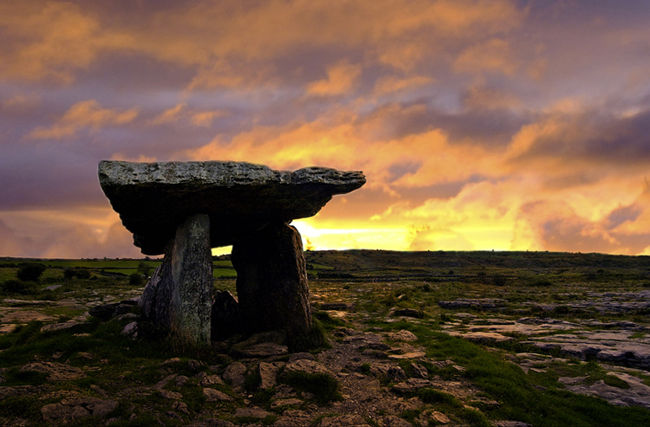
The entrance faces north and is marked by a low sill-stone. The thin roofslab,lifted to a height of 1.8 metres by imposing slab-like portal-stones, is tilted at the usual portal-tomb angle.
~ 1 km NNE is Cahercashlaun cliff-fort, a roughly-oval ‘cashel’ containing a souterrain, and an outer defensive wall on the NE side. The entrance is a natural cleft in the limestone, and was originally roofed with slabs.
~ 1.6 km NNW is a wedge-tomb in Gleninsheen – a small, box-like tomb resembling a stone kist whose E end is now open. Remains of two other wedge-tombs stand nearby.
Note: DNA from ancient Irish tombs reveals Down's Syndrome, incest and an elite class in the Neolithic, details and links in the comments on our page
You may be viewing yesterday's version of this page. To see the most up to date information please register for a free account.
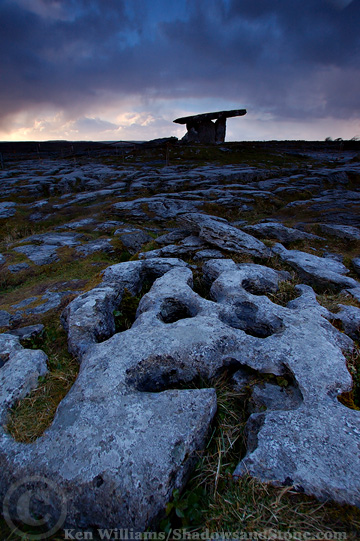

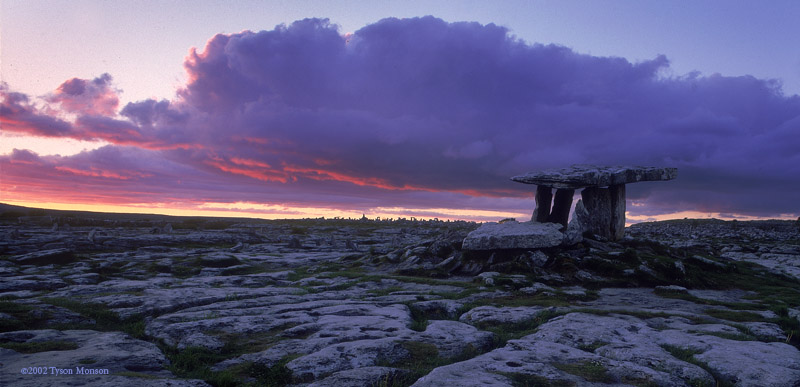
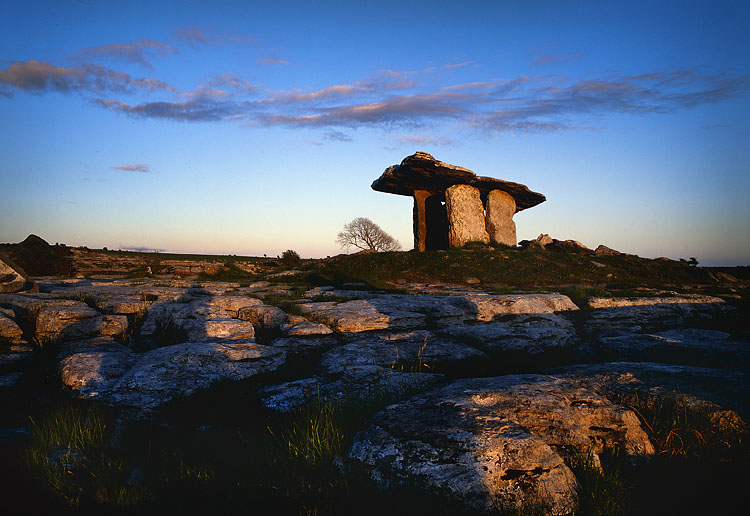
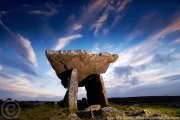
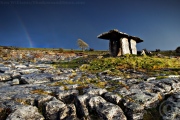
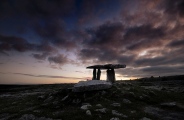

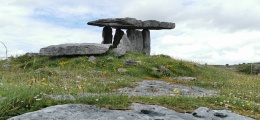
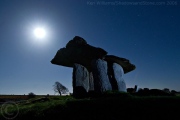
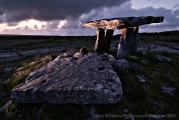


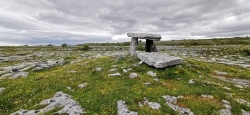
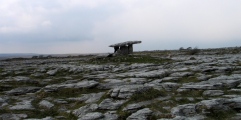


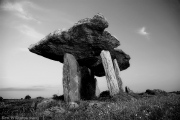
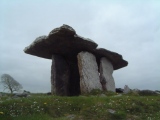
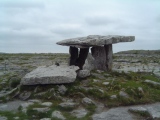



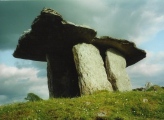
These are just the first 25 photos of Poulnabrone. If you log in with a free user account you will be able to see our entire collection.
Do not use the above information on other web sites or publications without permission of the contributor.
Click here to see more info for this site
Nearby sites
Click here to view sites on an interactive map of the areaKey: Red: member's photo, Blue: 3rd party photo, Yellow: other image, Green: no photo - please go there and take one, Grey: site destroyed
Download sites to:
KML (Google Earth)
GPX (GPS waypoints)
CSV (Garmin/Navman)
CSV (Excel)
To unlock full downloads you need to sign up as a Contributory Member. Otherwise downloads are limited to 50 sites.
Turn off the page maps and other distractions
Nearby sites listing. In the following links * = Image available
855m S 179° Caherconnell* Stone Fort or Dun (R236995)
1.3km W 275° Baur North* Wedge Tomb (M223005)
1.6km ENE 58° Ballymihil* Wedge Tomb (M250012)
1.7km S 184° Poulawack Rath and Souterrain* Souterrain (Fogou, Earth House)
1.9km S 190° Poulawack Cairn* Cairn (R2323998520)
1.9km WSW 258° Baur South Cairn* Cairn
1.9km W 261° Baur South* Wedge Tomb (M217001)
1.9km NNW 341° Gleninsheen 1* Wedge Tomb (M230022)
2.0km NNW 345° Gleninsheen 2* Wedge Tomb (M231023)
2.2km WNW 286° Poulnabrucky* Wedge Tomb (M215010)
2.7km SE 124° Meggagh* Wedge Tomb (R258988)
2.7km WSW 244° Lissylisheen* Wedge Tomb (R211992)
3.1km ENE 63° Poulaphuca* Wedge Tomb (M264017)
3.4km NE 38° Boloona* Wedge Tomb (M257030)
3.4km S 189° Iskancullin* Wedge Tomb (R230970)
3.9km W 265° Cahermacnaughten Stone Fort or Dun (M197001)
4.4km NNW 338° Cahermore Fort* Stone Fort or Dun
4.8km NNW 344° Ballyallaban Ring Fort* Stone Fort or Dun (M223050)
5.9km SE 139° Creevagh* Wedge Tomb (R274958)
6.0km ESE 114° Castletown Wedge Tomb* Wedge Tomb (R290978)
6.0km SE 129° Cahercommaun* Hillfort (R282965)
6.1km ESE 114° Castletown Souterrain* Souterrain (Fogou, Earth House) (R291978)
6.3km SE 125° Tullycommon* Wedge Tomb (R287966)
6.5km NW 318° Faunarooska Wedge Tomb* Wedge Tomb
6.7km SSW 210° Ballykinvarga* Stone Fort or Dun (R201946)
View more nearby sites and additional images

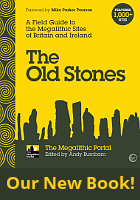

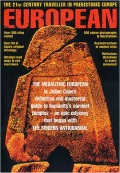

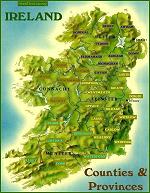
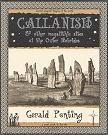
 We would like to know more about this location. Please feel free to add a brief description and any relevant information in your own language.
We would like to know more about this location. Please feel free to add a brief description and any relevant information in your own language. Wir möchten mehr über diese Stätte erfahren. Bitte zögern Sie nicht, eine kurze Beschreibung und relevante Informationen in Deutsch hinzuzufügen.
Wir möchten mehr über diese Stätte erfahren. Bitte zögern Sie nicht, eine kurze Beschreibung und relevante Informationen in Deutsch hinzuzufügen. Nous aimerions en savoir encore un peu sur les lieux. S'il vous plaît n'hesitez pas à ajouter une courte description et tous les renseignements pertinents dans votre propre langue.
Nous aimerions en savoir encore un peu sur les lieux. S'il vous plaît n'hesitez pas à ajouter une courte description et tous les renseignements pertinents dans votre propre langue. Quisieramos informarnos un poco más de las lugares. No dude en añadir una breve descripción y otros datos relevantes en su propio idioma.
Quisieramos informarnos un poco más de las lugares. No dude en añadir una breve descripción y otros datos relevantes en su propio idioma.